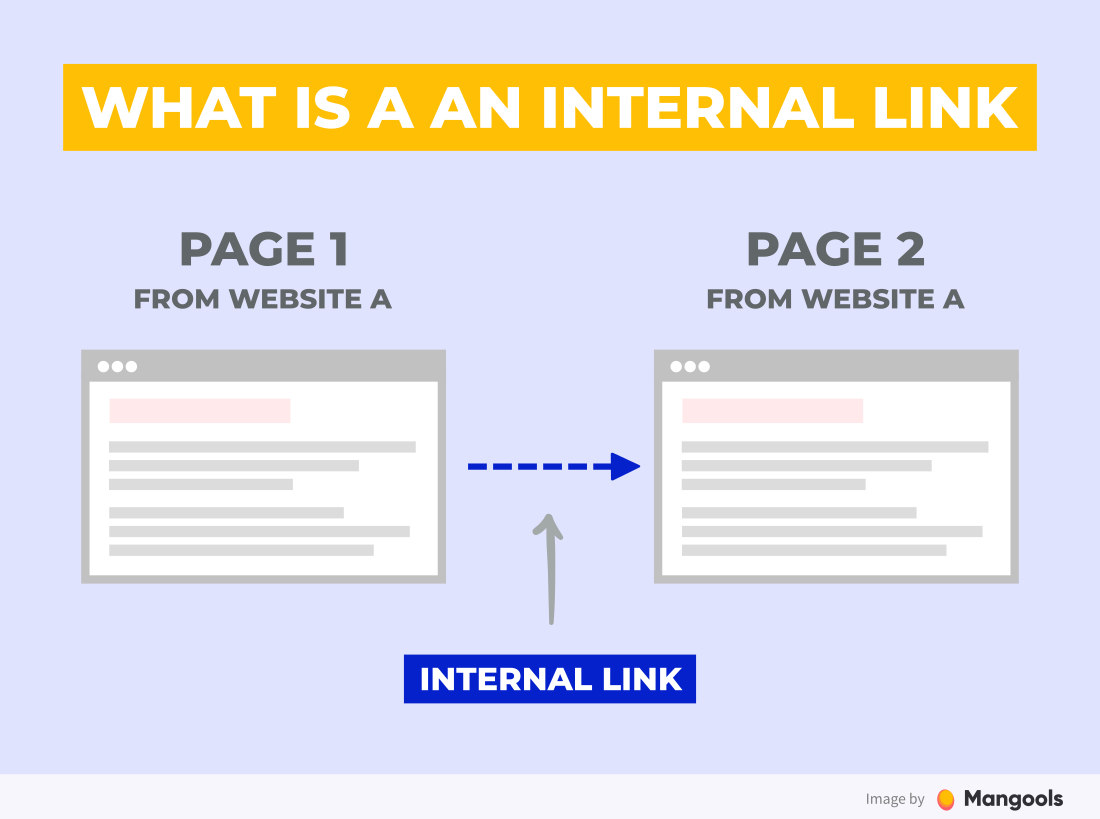/blog/media/media_files/vea4PqRwx8idqlefrDey.png)
What is Internal Linking ?
Internal linking is a key aspect of website optimization that should not be overlooked by publishers. It is the process of linking one page of a website to another within the same website and is important for both search engine optimization (SEO) and organic traffic. In this article, we will examine the importance of internal linking for both SEO and organic traffic.

What are the types of internal links?
There are several types of internal linking that can be used to optimize a website:
- Navigation Links: These links are used in the main navigation menu of a website and are designed to help visitors easily find and access different pages on the site.
- Contextual Links: These links are placed within the content of a page and link to other relevant pages within the website. They help to provide additional information and context for the reader.
- Footer Links: These links are placed in the footer of a website and are typically used to link to important pages such as the privacy policy, contact page, and about page.
- Breadcrumb Links: These links are used to provide a clear trail for visitors to follow as they navigate through a website. They help to provide context and make it easier for visitors to see where they are in the website's hierarchy.
- Related Links: These links are placed at the end of a page and link to other relevant pages within the website. They are designed to keep visitors engaged and on the site for longer.
These are some of the most common types of internal linking used by publishers. By using a combination of these types of internal links, publishers can create a strong internal linking structure that will help improve the visibility and success of their website.
Benefits :
- SEO Benefits:
- Improved Crawlability: By linking to relevant pages within a website, internal linking makes it easier for search engines to crawl and index a website, leading to better visibility and increased traffic.
- Link Equity Transfer: Internal linking can help pass link equity from one page to another, improving the ranking of linked pages and increasing their visibility in search results.
- Increased Relevance: Internal linking helps search engines understand the structure and hierarchy of a website, making it easier for them to determine the relevance of pages to specific keywords.
- Organic Traffic Benefits:
- Improved Navigation: Internal linking helps visitors navigate a website and find relevant information, making it easier for them to stay on the site for longer.
- Enhanced User Experience: By providing a clear structure and making it easy for visitors to find what they are looking for, internal linking supports the creation of a strong user experience and increases the likelihood of a conversion.
- Increased Time on Site: Internal linking can increase the average time on site, reducing bounce rate and increasing the likelihood of a conversion.
In conclusion, internal linking is a crucial aspect of website optimization that should not be overlooked by publishers. It can greatly improve a website's visibility and traffic, both from search engines and from organic visitors. To ensure the best results, publishers should create a strong internal linking structure, link to relevant pages, and use descriptive anchor text. By doing so, they will be able to take advantage of the many benefits of internal linking and improve their website's overall performance.
Also Read :
Coming Soon on our blog : How Publive helps publishers build internal linking on their website by click of a button ?
/blog/media/media_files/lead1.png)
/blog/media/media_files/2025/04/04/Gzhmyo5yzWjrznZr8sEN.png)